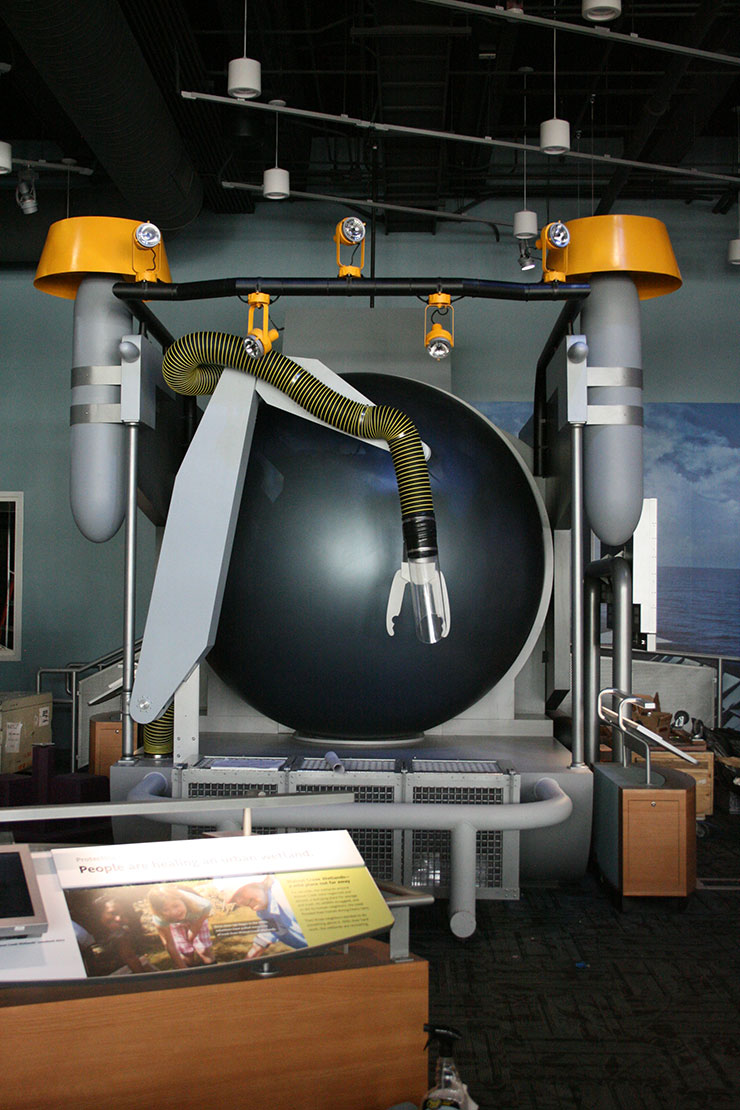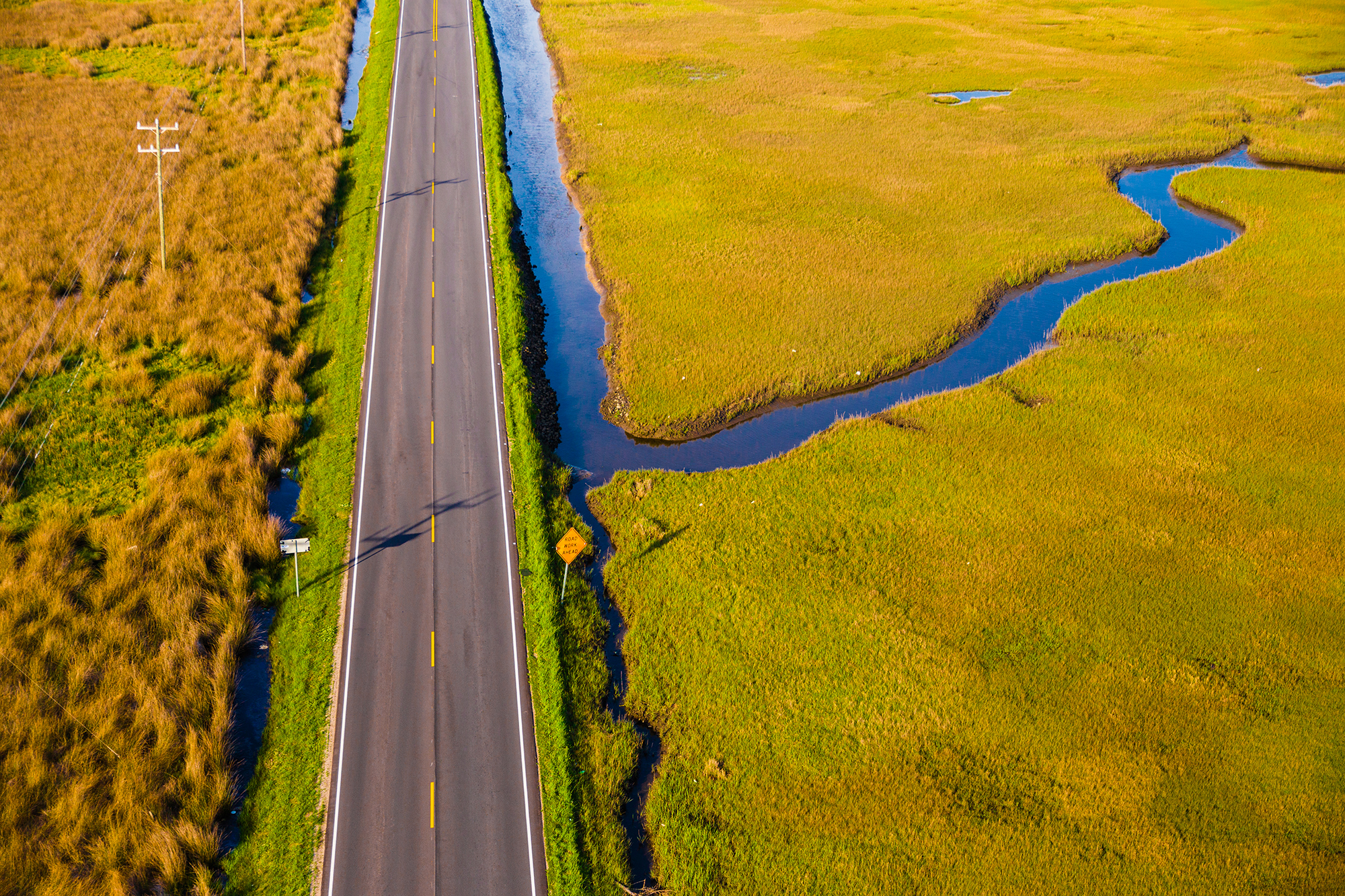A Simulated Sea Drive

Aspiring deep-sea explorers excitedly wait their turns to board the vessel as the previous crew of happy children and adults disembark on the other side.
These visitors to the Nature Research Center at the North Carolina Museum of Natural Sciences are actually onboard a model submersible that has been featured since the center opened in April 2012.
“The submersible definitely caught my attention,” says Elizabeth Moomey, a recent first-time visitor to the center.
“We get crowds,” acknowledges Liz Baird, director of education at the museum. Even though Baird has taken more than a dozen trips in an actual submersible, the model still excites her.
The model submersible holds more people than the actual vehicle, but comes close to the actual experience, Baird explains.

“There is no sensation of rocking once you get below the surface,” she says about the research cruises. “The sense of motion comes when the sub is bobbing on the top of the water before it submerges and when it is recovered,” Baird adds. Scientists dive as deep as 3,000 feet on trips that can last more than three hours.
While in the model submersible, which seats six as opposed to the actual submersible’s four-person arrangement, museum visitors view footage from a real dive. The screen acts as a mock sphere.
The video footage, recorded by award-winning photojournalist Art Howard, shows the scientists collecting samples for research funded by the National Oceanic and Atmospheric Administration through the Office of Ocean Exploration and Research.
Viewers see what the team does — the ocean floor, its native fauna, and the submersible’s manipulator arms as it reaches out to collect sea life, including the coral Lophelia pertusa. Upon exiting the model, the visiting crew can see real samples of Lophelia in holding bins.
Baird anticipates that visitors will leave with a sense of interest and wonder for the coral and other deep-sea life forms. The team hopes to encourage protection of the coral, whose habitat could be damaged by human activities.
Lophelia has been found all over the North Atlantic Ocean, from Canada through the Gulf of Mexico, including the Caribbean. There also are extensive reefs in the northeastern Atlantic. Many species of fishes, crabs, sponges and other invertebrates are among the organisms that make their home in and around the coral.
It can take over a year to analyze the materials that are brought up during one cruise, Baird notes.
Along with the focus to protect sea life, Baird and her colleagues also take precautions — and emergency supplies — to ensure their own safety. Going down in a real submersible feels like being an astronaut about to launch, she explains.
“They really have to plan out what’s going to be in there — as if they were putting you into a rocket ship and sending you into space.”
Find out about the N.C. Museum of Natural Sciences and the Nature Research Center at www.naturalsciences.org.
For more on undersea exploration, visit oceanexplorer.noaa.gov. Follow the Technology link to learn about the technologies that researchers use. Go to the Explorations link for specific expeditions.
This article was published in the Spring 2013 issue of Coastwatch.
For contact information and reprint requests, visit ncseagrant.ncsu.edu/coastwatch/contact/.
- Categories:


